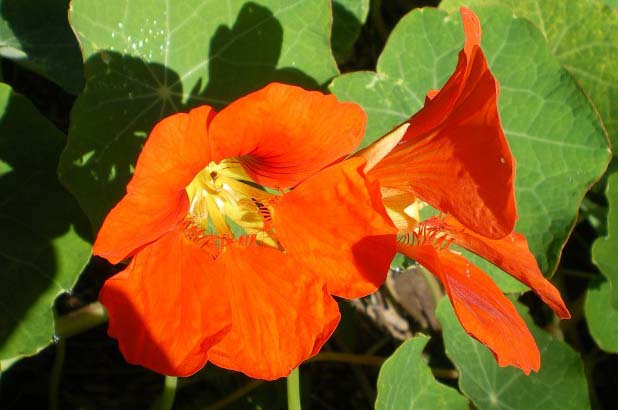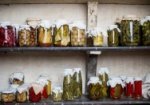(It’s a dreadful pun… sorry about that!) If you’re a dab hand at mint sauce, how about trying another colonial favourite with your roast mutton / hogget / lamb – caper sauce?
We know from Elizabeth Macarthur’s letters that caper sauces were served at their table:
We have made a small quantity of olive oil, and we have had capers for our mutton. We cannot find out a successful mode of propagating the caper plant. I fear ours is a peculiar variety.(Elizabeth Macarthur to her son Edward, 12 may 1832. ML A2906).
‘Capers’ are the unopened flower buds of the caper plant.
“But that’s not a caper bush in your photo!” I hear you cry. Spot on.
Elizabeth’s comment that their caper bush wasn’t flourishing seems to have been a common experience, and many turned to a thriving alternative – nasturtiums, seen here growing in the kitchen garden at Vaucluse House. While the nasturtium’s edible flowers are a decorative addition to salads, the seed pods of this rambling creeper can be pickled in just the same way as caper buds. Eliza Acton (Modern cookery, 1845) even wrote that ‘pickled nasturtiums make a very good sauce, and their flavour is sometimes preferred to that of capers’. A copy of Maria Rundell’s New System of Domestic cookery (London, John Murray, 1816, p121), in the collection at Rouse Hill House contains this simple pickling method:
Nasturtiums, for capers
Keep them a few days after they are gathered: then pour boiling vinegar over them and when cold, cover. They will not be fit to be eaten for some months; but are then finely flavoured, and by many preferred to capers.
For a chilli vinegar, simply put a dried chilli into the bottle with the capers and vinegar.
This is Eliza Acton’s recipe for a caper sauce, such as enjoyed at the dining table at Elizabeth Farm:
Eliza Acton’s caper sauce
Ingredients
- 3/4 cup butter
- 1/3 cup capers (roughly chopped)
- 2 tablespoons vinegar (or to taste)
Note
An alternative to mint sauce, this hot, piquant sauce made from capers or nasturtium pods is delicious served with fatty roast lamb. It's from Eliza Acton's Modern cookery for private families (London, 1855 edition).
CAPER SAUCE. Stir into the third of a pint of good melted butter from three to four dessertspoonsful of capers; add a little of the vinegar, and dish the sauce as soon as it boils. Keep it stirred after the berries [capers, not caperberries] are added : part of them may be minced and a little chili vinegar substituted for their own. Pickled nasturtiums make a very good sauce, and their flavour is sometimes preferred to that of the capers. For a large joint, increase the quantity of butter to half a pint. Melted butter, third of pint; capers, 3 to 4 dessertspoonful.
Directions
| Melt the butter in a small saucepan over low heat. | |
| Chop the capers, and stir them, along with the vinegar, into the melted butter. | |
| Continue to stir until bubbles start to appear, then immediately remove from heat and serve. | |
| Cook's note: This makes about a cup of sauce, so you may want to consider halving the recipe. Store-bought bottles of capers may be preserved in brine, not vinegar, or salted. If so, give them a rinse, pat dry, and I suggest you then warm them in the white wine vinegar you will use in the recipe to develop the caper flavour. Caperberries, which you buy with stems attached, are the larger seed pods of the caper bush and are not used for this recipe. | |

 Print recipe
Print recipe

